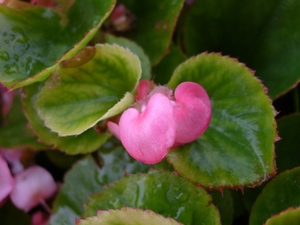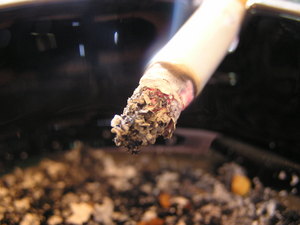Begonia semperflorens is a popular bedding plant commonly referred to as the wax begonia. This fleshy-stemmed plant is native to Brazil and prefers full to partial shade, but will tolerate direct sun if mulched and provided adequate water. When grown in baskets or as an edging plant, wax begonias create a mass of color from early summer until frost.
Bringing Begonia Semperflorens Inside For Winter
When frost threatens, many gardeners bring begonias inside for the winter. But, bringing the whole plant inside rarely results in a healthy houseplant, as the change in temperature and sunlight often causes begonias to drop their leaves.
For the healthiest houseplants, begonia semperflorens should be cut back when temperatures begin to drop in late summer or early fall, depending on your location. Once trimmed, they can be moved inside and grown on a sunny windowsill until spring.
Cutting Wax Begonias Back
Use a sharp knife to cut the stems back to 2 to 4 inches from the rim of the pot. Don’t worry about the appearance of your begonia at this point. New growth resumes quickly and you will soon have a thriving plant to brighten your windowsill.
Move the plant to the desired location and water whenever the soil dries. A dose of all-purpose fertilizer will boost growth at this time.
Save Cuttings From Wax Begonias
Don’t throw those cuttings away! Begonia cuttings root quickly in water. Depending on the size of your plant and the number of cuttings, you should have enough cuttings to start several new plants.
Trim the cuttings to a length of 4 to 6 inches. I prefer a 6-inch cutting as it makes rooting in jar easy and produces a good-sized plant when the cuttings are potted. Some prefer shorter stems.
Remove the leaves from the bottom 2 to 4 inches of the stem. This is the area where new roots will form when you root them in water. Leaves that touch or are submerged in water decay quickly.
Place the cuttings in a jar or vase of water. An old mason jar works well, as it holds several cuttings and does not tip easily. It also allows you to observe the roots without disturbing the cuttings.
Set the cuttings in bright indirect light. I prefer to set my stem cuttings on the kitchen windowsill where I can check it easily when doing kitchen chores.
Check The Water In Rooting Jars Daily
Check the water daily and refill as water evaporates. If water becomes stagnant, gently pour off the water and refill the jar with fresh water. Occasionally the ends of the stems decay in the water if you forget to change the water. If this happens to you, remove the cutting and recut the stem. Place in fresh water.
Planting the Cuttings
Watch for roots to appear in a week or ten days. Pot the cuttings in fresh soil when roots are an inch or two long. Place newly rotted plants in bright indirect light. An eastern or northern window typically provides adequate light for begonias, but they may require more light during the short winter days.






